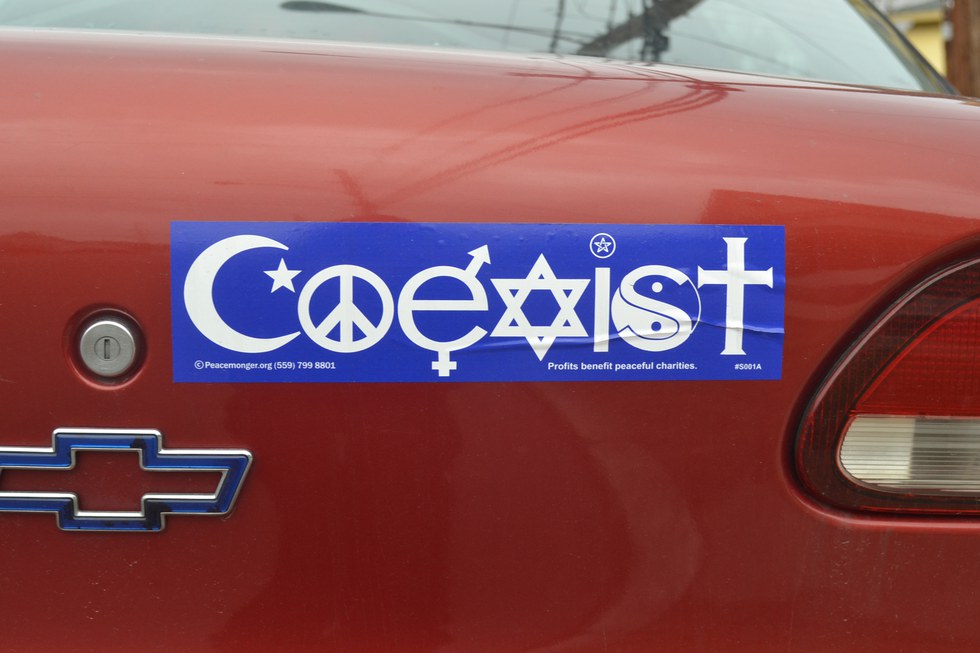Why the Coexist Sticker Is Bad: Unpacking the Controversy

Introduction
The ubiquitous “coexist” sticker, often seen on car bumpers and laptops, seems to promote an admirable message of harmony among different religious and ideological groups. However, as with many things in life, the surface can be deceiving. In this article, we’ll explore the reasons why the coexist sticker is bad from various angles, shedding light on the controversies it has sparked and the arguments against its seemingly noble message.
The Origin of the Coexist Sticker
The history of the coexist sticker dates back to the 2000s when it gained popularity as a symbol of tolerance and interfaith understanding. Composed of various religious symbols forming its letters, it aimed to promote unity in a diverse world. However, the sticker’s idealistic message has been met with criticism.
Why the Coexist Sticker Is Bad
Lack of Nuance
One of the primary criticisms of the coexist sticker is its oversimplification of complex religious and ideological issues. By reducing intricate belief systems to mere symbols, it fails to acknowledge the deep-rooted differences and conflicts among them.
Superficial Activism
Many argue that displaying a coexist sticker can give people a false sense of activism. It’s easy to affix a sticker to a car but much harder to engage in meaningful interfaith dialogue or contribute to resolving real-world conflicts.
Cultural Appropriation
Some critics argue that the sticker appropriates religious symbols for commercial gain, trivializing their sacred meanings in the process. This can be offensive to those who hold these symbols dear.
Misunderstanding of Religions
The sticker’s creators may have had good intentions, but it reflects a superficial understanding of the religions it represents.coexist sticker Using symbols without comprehending their significance can lead to misinterpretations and misrepresentations.
The Controversy Surrounding the Sticker
Religious Backlash
Some religious groups take offense at the coexist sticker, feeling that it lumps their beliefs together without respecting their unique tenets. This has led to calls for the removal of the sticker from public spaces.
Counter-Stickers
In response to the coexist sticker, counter-stickers have emerged, displaying messages like “Coexist? Why?” These opposing viewpoints highlight the divisive nature of the original sticker.
Cultural Sensitivity
As society becomes more aware of cultural appropriation and sensitivity, the coexist sticker’s use of religious symbols has been scrutinized. It raises questions about respecting and understanding diverse cultures.
/cdn.vox-cdn.com/uploads/chorus_asset/file/6601399/U2_vertigo_tour_live_Chicago_2005.jpg)
What Does the Coexist Sticker Represent?
The Coexist sticker is a colorful emblem featuring religious symbols from various faiths, including the crescent moon and star of Islam, the Star of David representing Judaism, the cross symbolizing Christianity, and many others. It is intended to promote tolerance, understanding, and peaceful coexistence among different religious groups.
Why the Coexist Sticker Is Bad
While the intentions behind the Coexist sticker are undoubtedly positive, it has faced criticism and backlash for several reasons:
1. Oversimplification of Complex Issues
The Coexist sticker attempts to condense complex religious and cultural issues into a single symbol. Critics argue that it oversimplifies the deep-rooted conflicts and historical tensions among different faiths.
2. Cultural Appropriation
Some view the use of religious symbols from various faiths on a single sticker as a form of cultural appropriation. They argue that it diminishes the significance and sanctity of these symbols.
3. Lack of True Understanding
The sticker’s message of coexistence may not translate into genuine understanding and dialogue between religious groups. Critics suggest that it may serve as a coexist sticker superficial symbol rather than a catalyst for meaningful conversations.
4. Commercialization
The Coexist sticker has become a commercial product, with its image appearing on various merchandise. This commercialization has led some to question the sincerity of its message, believing it’s more about profit than promoting harmony.
5. Limited Impact
Despite its widespread recognition, there is skepticism about whether the Coexist sticker has had a meaningful impact on reducing religious conflicts or promoting unity. Critics argue that it might be more of a feel-good symbol than an agent of change.
Personal Experiences and Insights
As someone who has observed the Coexist sticker’s journey from a grassroots symbol to a widely recognized emblem, I can attest to the mixed reactions it evokes. While some see it as a beacon of hope, others view it as a symbol that falls short of its intended purpose.
It’s important to note that my intention here is not to pass judgment on the Coexist sticker but to provide a balanced perspective on the controversy surrounding it.
FAQs
Q: Is the coexist sticker promoting a bad message? A: It’s not necessarily promoting a bad message, but its oversimplification and lack of depth have garnered criticism.
Q: Are there any alternatives to the coexist sticker? A: Yes, some individuals and organizations opt for different symbols or gestures to promote interfaith understanding.
Q: Can the coexist sticker lead to meaningful dialogue? A: While it can initiate conversations, meaningful dialogue requires more than just displaying a sticker.
Q: Why do some religious groups dislike the coexist sticker? A: They believe it oversimplifies and generalizes their beliefs, leading to misunderstandings.
Q: What’s the best way to promote tolerance and understanding? A: Engaging in respectful dialogue, learning about different cultures, and supporting organizations that work toward these goals can be more effective than a sticker.
Q: Is it possible to display the coexist sticker respectfully? A: Yes, as long as it’s done with an understanding of its limitations and a willingness to engage in genuine interfaith dialogue.
Conclusion
While the coexist sticker’s intentions are commendable, it falls short in addressing the complexities of religious and ideological diversity. Its oversimplification, potential for cultural appropriation, and superficial activism have led to criticisms and controversies. As we strive for a more harmonious world, it’s essential to recognize that promoting tolerance and understanding requires more than a sticker—it demands genuine engagement and education.






